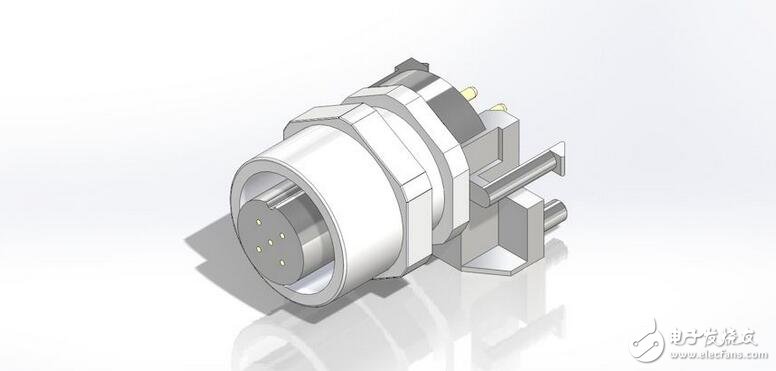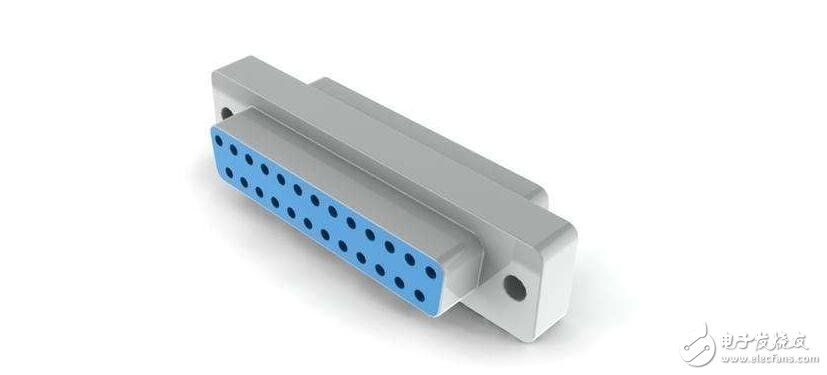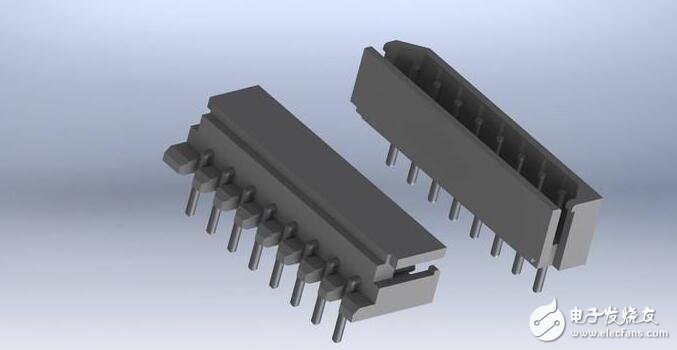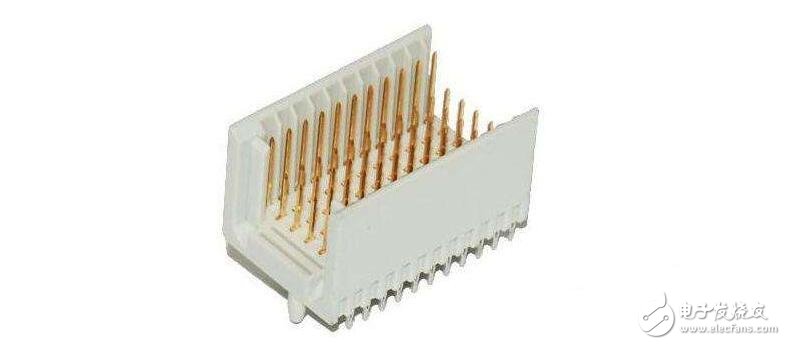Connector, CONNECTOR. Domestically referred to as connectors, plugs and sockets. Generally refers to electrical connectors. That is, a device that connects two active devices to transmit current or signals. A connector is a detachable component (except an adapter) that is typically installed on a cable cable supplier or device for electrical connection of the transmission line system, that is, a device that connects two active devices to carry current or signals.

Connectors are a component that our electronic engineering technicians often come into contact with. Its role is very simple: to bridge the communication between the blocked or isolated circuits in the circuit, so that the current flows, so that the circuit achieves the intended function. Connectors are an indispensable part of an electronic device. You will always find one or more connectors along the path through which the current flows. The form and structure of the connector are ever-changing. There are various types of connectors depending on the application object, frequency, power, and application environment. For example, the connector for lighting on the court and the connector for the hard drive, as well as the connector for igniting the rocket, are quite different. But no matter what kind of connector, it is necessary to ensure smooth and continuous current flow. In general terms, the connection of the connector is not limited to current. In today's rapid development of optoelectronic technology, in the optical fiber system, the carrier that transmits the signal is light, and the glass and plastic replace the wires in the ordinary circuit, but the optical signal Connectors are also used in the vias, which function the same as circuit connectors.

Connectors are a component that our electronic engineering technicians often come into contact with. Its role is very simple: to bridge the communication between the blocked or isolated circuits in the circuit, so that the current flows, so that the circuit achieves the intended function. Connectors are an indispensable part of an electronic device. You will always find one or more connectors along the path through which the current flows. The form and structure of the connector are ever-changing. There are various types of connectors depending on the application object, frequency, power, and application environment.
For example, the connector for lighting on the court and the connector for the hard drive, as well as the connector for igniting the rocket, are quite different. But no matter what kind of connector, it is necessary to ensure smooth and continuous current flow. In general terms, the connection of the connector is not limited to current. In today's rapid development of optoelectronic technology, in the optical fiber system, the carrier that transmits the signal is light, and the glass and plastic replace the wires in the ordinary circuit, but the optical signal Connectors are also used in the vias, which function the same as circuit connectors.

A connector is a motor system that provides a detachable interface for connecting two secondary electronic systems without unacceptable effects on the operation of the system. The key words in the definition are "motor system", "separable" and "unacceptable effect". A connector is a motor system because of its electrical connection that is produced mechanically. As will be discussed, the deflection of the mechanical spring creates a force between the mating portions, which creates a metallic contact between the mating faces of the interface. The reason why the application connector is in the first place is that the interface is separable. The need for separability has many reasons. It allows for the manufacture of parts or subsystems independently and the final assembly can be done in one main place. Separability also allows maintenance or upgrades of parts or subsystems without having to modify the overall system. Another reason for the separability to be applied is portability and support for the expansion of peripherals.
On the other hand, the separability in the definition introduces an additional interface between subsystems that does not introduce any "unacceptable effects", especially in terms of system characteristics that cannot be affected by telecommunications, such as Unacceptable distortion and signal degradation between systems, or power loss through the connector, power loss calculated in millivolt losses, will become the main design criteria for functionality, so the power requirements of the motherboard will also increase.
The need for separability and the limits of "unacceptability" are determined by the application of the connector. The separability includes the number of mating cycles, which are the forces that the connector must provide without affecting its performance and the forces necessary to match the other connector. Typical mating cycle requirements range from tens of cycles of internal connectors to thousands of cycles of peripherals, such as PCMCIA type connectors. As the number of circuits or functions and the interconnection of connectors increase, the need for strength is becoming more important. In order to provide more functionality, the position of the terminals on the connector must also be increased, which results in a higher connector fit. Depending on the use and function of the connector, the number of terminals varies from tens to thousands.

1. Improve the production process
The connector simplifies the assembly process of electronic products. It also simplifies the mass production process;
2. Easy to repair
If an electronic component fails, the failed component can be quickly replaced when the connector is installed;
3. Easy to upgrade
As technology advances, components can be updated with connectors, replacing old ones with new, more sophisticated components;
4. Improve design flexibility
The use of connectors gives engineers greater flexibility when designing and integrating new products, as well as when building components with components.
Lithium Ion Battery For Electric Golf Cart
Advantages of Lithium Golf Batteries
Lithium golf batteries (or LiFePO4 batteries) have been around for a while now on electric golf buggies, but until recently have been quite expensive. Most brands now including MGI Golf, Autocaddy, Motocaddy and Powakaddy come standard with lithium ion batteries. But not only can you get a lithium battery for a new golf buggy, there are suppliers providing them for older buggies by running on the same voltage as a lead acid battery.
Below is a breakdown of the advantages of a lithium golf battery over their lead acid counterparts:
Greater life expectancy
The main advantage of a lithium battery is the life expectancy. Whilst a lead acid battery will last around 300 cycles, a lithium battery can last up to 5000 cycles, meaning over the life of the battery a lithium is more cost effect per round of golf. Lithium batteries are maintenance free and have the benefit of a control board built in, thus ensuring worry free golfing.
Light weight
Another advantage is in the weight of the battery. A lithium battery weights on average 5 times less than a similar amp-hour lead acid battery. This makes it easier to lift making it easier to transport to other golf courses. The lighter weight also puts less strain on your buggy and therefore less wear and tear over time. This will improve the life of your buggy and mean less repairs will be required.
Short Charge Times
Charging times are also reduced when using lithium batteries over lead acid. Whilst it can take over 8 hours to charge a lead acid battery, a lithium battery can be fully charged in less than 3 hours. Lithium batteries are also able to be left off charge for longer periods of time compared to a lead acid battery. Once fully charged your lithium battery can be left off charge for up to 3 months before any damage occurs, whilst a lead acid battery will start to sulphide within 3 weeks.
Low Maintenance
Lithium batteries (Li-Ion batteries) require less maintenance than most forms of batteries. Other batteries, such a lead acid, require a periodic discharge to maintain the battery memory. This is not required for Lithium batteries, which can be left off charge for up to 3 months (once fully charged).
Lithium batteries also do not require topping up, like older forms of lead acid batteries. This means there is less maintenance required and less that can go wrong.
So there you have it, a lithium golf battery will not only last longer than a lead acid battery, but will save you time and money over its life.
Lithium Ion Battery For Golf Trolley,Lithium Golf Cart,Golf Cart Lithium Battery,Golf Cart Battery
Shenzhen Sunbeam New Energy Co., Ltd , https://www.sunbeambattery.com
![<?echo $_SERVER['SERVER_NAME'];?>](/template/twentyseventeen/skin/images/header.jpg)